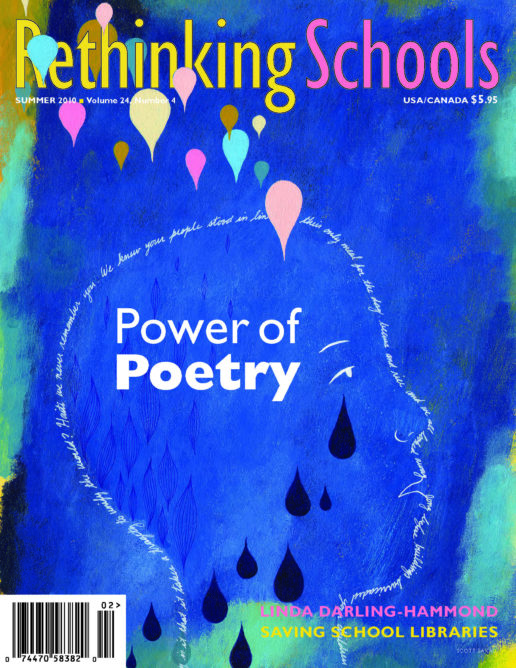Preview of Article:
Five Years After the Levees Broke – Bearing Witness Through Poetry
Illustrator: Scott Bakal
This is an oral history lesson
just in case the textbooks neglect the truth:
Natural disaster holocausts
are destroying the poor.
Tens of thousands of bodies lie in Haiti’s ditches.
Hundreds of deferred dreams drowned
in Katrina’s waters . . . ”
My high school students stood on stage performing their collaborative poem at the Schomburg Center for Research in Black Culture in Harlem. How fitting that these budding protest poets would be given the opportunity to have their voices rise in the Langston Hughes Auditorium. DreamYard’s annual spoken word poetry festival gave parents, teachers, youth, and even politicians a chance to witness New York City’s teen poets speak their truth. I sat in the front row, beaming with pride, not only because their performance went off without a hitch, but also because I knew these students meant every word they were reciting. I beamed with pride because I was witnessing the power of arts integration. What started out as a compare-and-contrast assignment for a social issues unit turned into a piece of art. A declaration.
As a teaching artist in public schools, I am paired with classroom teachers to teach poetry and to give students an opportunity to experience their academic curriculum through the arts. At the beginning of the school year, I gave my students the ongoing, yearlong assignment to watch the news, to pay attention. We studied Gwendolyn Brooks, who wrote about Emmett Till, and Langston Hughes, whose poetry can be used as a literary commentary on the black experience in America. “Great poets listen to their world and speak back,” I told my students.

